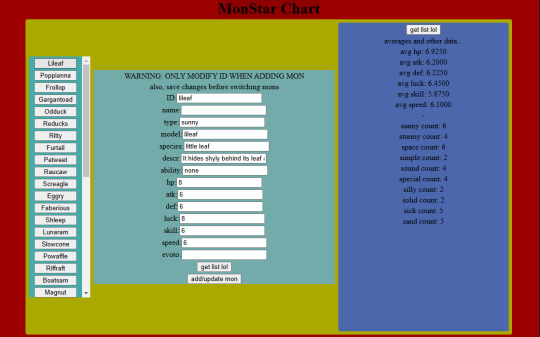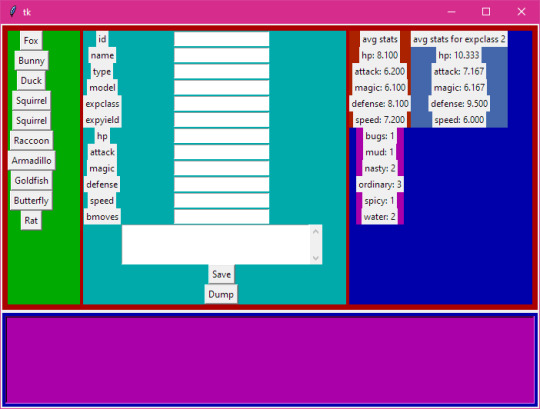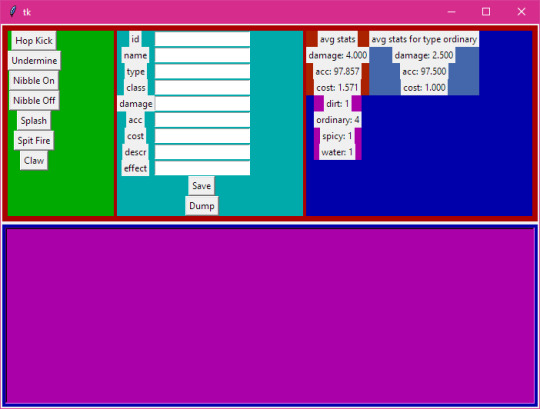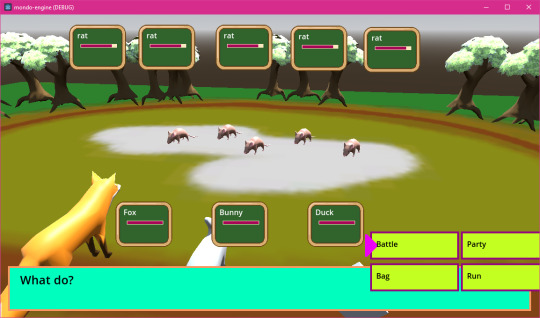#sql database tutorial
Explore tagged Tumblr posts
Text

SQL Interview Questions
The following SQL interview questions and answers are designed to familiarize candidates with common interview questions.
#besttraininginstitute#traininginstitute#onlinetraining#training#online#coding#tutorial#technology#trending#design#infographics#sql#mysql#database#programming#engineering
5 notes
·
View notes
Video
youtube
MS SQL Tutorial in Bengali | সহজ বাংলায় শিখুন MS SQL Server - Part-1
#youtube#MS SQL Server Tutorial Create Database MS SQL Delete Database MS SQL SQL Server Database Management SQL Server for Beginners SQL Server SSMS
0 notes
Text
SQL Reference
0 notes
Text
Efficient Data Import in SQL Server 2022: BCP vs. BULK INSERT vs. OPENROWSET
Ever found yourself swimming in an ocean of data, wondering the best way to import it into your SQL Server? You’re not alone. SQL Server 2022 comes to the rescue with a trio of tools designed to streamline this process: BCP, BULK INSERT, and OPENROWSET. Each has its unique flair for handling data, and I’m here to guide you through choosing the right tool for the job with some handy T-SQL…
View On WordPress
#BCP command examples#BULK INSERT SQL tutorial#Efficient database management SQL#OPENROWSET usage guide#SQL Server 2022 data import
0 notes
Text
learn sql server online course
elevate your skills with accredited sql server online course. gain expertise and earn a valuable certificate. start learning today!
sql database training courses ,learn sql online course ,sql server database training ,sql server complete course ,online sql training and certification ,
#sql database training courses#learn sql online course#sql server database training#sql server complete course#online sql training and certification#msbi certification#msbi training#msbi tutorial#sql server tutorial#sql server certification#power bi certification#power bi tutorial
1 note
·
View note
Text
youtube
#ntelligent Lookup#Database Views#Data Retrieval#Data Presentation#Database Optimization#Data Analysis#Database Relationships#Data Visualization#Database Tutorial#Query Optimization#Data Enhancement#Database Management#SQL Views#Data Integration#Related Tables#Youtube
0 notes
Text
SQL Injection Attacks:
Understanding the Risks and Implementing Prevention Measures
Introduction:
In today's interconnected world, where data is a valuable asset, protecting the integrity and security of databases is critical. SQL injection attacks are a significant threat that database administrators and developers face. These attacks take advantage of vulnerabilities in web applications to manipulate the underlying SQL queries, potentially resulting in unauthorized access, data breaches, and compromised systems. Understanding the risks associated with SQL injection attacks and putting effective prevention measures in place are critical for protecting sensitive data. In this article, we will look into the specifics of SQL injection attacks, as well as their potential consequences and preventive measures.
What exactly is SQL Injection?
SQL injection is a technique used by attackers to insert malicious SQL code into a database query in an application, allowing them to manipulate the query's behavior. Attackers can circumvent authentication mechanisms, access unauthorized data, modify or delete records, and even take control of the entire database server by taking advantage of inadequate input validation and sanitization practices.
SQL Injection Attack Risks and Consequences:
a. Unauthorized Access: SQL injection vulnerabilities can be used by attackers to bypass login systems and gain unauthorized access to sensitive data, user accounts, or administrative privileges.
b. Data Breach: SQL injection attacks can expose sensitive data, such as personally identifiable information (PII), financial data, or intellectual property. This can have serious legal, financial, and reputational ramifications for organizations.
c. Database Manipulation: Attackers can change, delete, or manipulate data in a database, potentially resulting in data corruption, operational disruptions, or financial losses.
d. Denial of Service: SQL injection attacks can cause database servers to become overloaded, resulting in system crashes or slowdowns and making the application inaccessible to legitimate users.
Preventive measures include:
a. Input Validation and Sanitization: Enforce strict input validation by validating and sanitizing user input before it is used in SQL queries. Use parameterized queries or prepared statements to ensure code and data separation, preventing malicious code injection.
b. Least Privilege Principle: Assign database accounts the bare minimum of privileges. Reduce the potential impact of a successful SQL injection attack by restricting access and limiting the permissions granted to application accounts.
c. Web Application Firewalls (WAF): Use WAFs that specialize in detecting and preventing SQL injection. These security solutions can detect and prevent malicious SQL queries from reaching the database server.
d. Regular Patching and Updates: Maintain all software, frameworks, and libraries with the most recent security patches. This contributes to addressing known vulnerabilities that attackers could exploit.
e. Educate and Train Developers: Raise developer awareness of the risks and consequences of SQL injection attacks. Teach them secure coding techniques, with an emphasis on input validation, parameterized queries, and proper error handling techniques.
f. Security Audits and Penetration Testing: Perform regular security audits and penetration testing to identify and remediate potential SQL injection vulnerabilities. Engage ethical hackers or security professionals to assess the security posture of the application.
Conclusion:
SQL injection attacks pose a significant risk to database security and integrity, potentially resulting in unauthorized access, data breaches, and compromised systems. Understanding the risks of SQL injection and implementing strong prevention measures are critical for organizations looking to safeguard their valuable data assets. Developers and administrators can mitigate risks and stay one step ahead of malicious actors by implementing secure coding practices, deploying web application firewalls, and conducting regular security audits. Remember that prevention is the key to preventing SQL injection attacks and ensuring the security of your database systems.
Improve your SQL knowledge today! Join CACMS for our in-depth SQL complete course and discover the power of databases. Enroll right now http://cacms.in/
#sql course#sql certification#learn sql#sql database#sql queries#sql tutorial#cacms institute#enroll now#sql attacks
0 notes
Text
Data Liberation: Empowering Mankind with Azure OpenAI and Azure SQL
In today's world of endless information, we are on a mission to set data free. LangChain, in collaboration with Azure OpenAI, has the ability to comprehend and generate text that closely resembles human language. This has the potential to transform the wa
In today’s world of endless information, we are on a mission to set data free. LangChain, in collaboration with Azure OpenAI, has the ability to comprehend and generate text that closely resembles human language. This has the potential to transform the way we analyze data. By combining these technologies, organizations gain the ability to harness data for making thoughtful decisions. Are you…

View On WordPress
0 notes
Video
youtube
FREE SQL tutorial for data science - SQL Order By Clause | SQL Tutorial
#youtube#FREE SQL tutorial for data science SQL Order By Clause | SQL Tutorial SQL Datascience Analyst Database Chatgpt skills
0 notes
Text
SQL GitHub Repositories
I’ve recently been looking up more SQL resources and found some repositories on GitHub that are helpful with learning SQL, so I thought I’d share some here!
Guides:
s-shemee SQL 101: A beginner’s guide to SQL database programming! It offers tutorials, exercises, and resources to help practice SQL
nightFuryman SQL in 30 Days: The fundamentals of SQL with information on how to set up a SQL database from scratch as well as basic SQL commands
Projects:
iweld SQL Dictionary Challenge: A SQL project inspired by a comment on this reddit thread https://www.reddit.com/r/SQL/comments/g4ct1l/what_are_some_good_resources_to_practice_sql/. This project consists of creating a single file with a column of randomly selected words from the dictionary. For this column, you can answer the various questions listed in the repository through SQL queries, or develop your own questions to answer as well.
DevMountain SQL 1 Afternoon: A SQL project where you practice inserting querying data using SQL. This project consists of creating various tables and querying data through this online tool created by DevMountain, found at this link https://postgres.devmountain.com/.
DevMountain SQL 2 Afternoon: The second part of DevMountain’s SQL project. This project involves intermediate queries such as “practice joins, nested queries, updating rows, group by, distinct, and foreign key”.
37 notes
·
View notes
Text
So in case you're wondering what I've been up to for the last month or so (no one is here), I've been working on this-

A CRUD app! Because that seems to be what everyone's making these days. It's an editor for monster data. Because, like, all the tutorials were for managing employee data and shit, but this is what data I have that needs managing. It's got a React js frontend and a javascript backend.
It basically runs off this list of data that spawns the entry rows and stuff, so I can add to it easily or reuse the base code between projects:

That's neat, but it was a real pain in the ass to have to start up both the client and the server whenever I wanted to use it, so I made basically the same thing but in Python with tkinter:

And as an example of reuse here's it being used for moves data-

A lot of things are made easier with this. Mainly there's only one data list, whereas the CRUD app needed the state hooks declared, then the data list including the "pointers" to the state variables and setter functions, then the backend needed its own list of the names of the SQL columns.
This version has some extra features like, if you add something to the data list it'll add a column to the SQL database for you. Plus Python is similar to GDScript, so I could bundle a basic version of it with the Mondo code.
Meanwhile I've been upgrading the battle system to handle multiple mons in one battle-

Next I'm probably going to step back a bit and document the code, because it's becoming a bit messy and I need to clean it up
5 notes
·
View notes
Text
My strengths and ambitions



Generic skills and forces:
Research, "Creative" Writing & Analysis (atlases, encyclopedias, reference works...)
Multimedia Collaging and Video Compositing
Analog Media and Digital Data Preservation
Composing tracker music
Technical documentation
(explorable?) multimedia explainers
History (& alternate history)
Information technologies
Historical hardware & software
Sidestream software & "operating" systems
Linguistics?
Casual spirituality topics?
TTRPG crawl campaign setting & systemic designs...
Toybox tools and manifestation games...
Causal collectible card games and expansive board game mods...
Demoscene and game modding...
Vector / Retro Aliased Raster illustrations
Animations & interactive (A?)SVG cartoons
Free, Libre and Open Source movement (open culture, open hardware and open software, et cetera.)
Computer builds and overall customization (especially the looks but also functionality, both virtual and physically informed)
Sensible, caring and detail-oriented.
Specific skills (existing and upcoming) and emphasis points for my career
Page pixel dolls, banner blinkies, panels & other animated GIF graphics...
Printables (blanks, worksheet, guestbooks, greeting cards...)
Stickers & clipart
Stationery (especially legacy/obsoleted types)
Desktop organizers with bundled theme packs (even cursors, icons, sounds, widgets and almost everything else under the sun?)
Monero+Liquid online shop
ClipStudioPaint (upcoming...)
WordPerfect from Corel (upcoming...)
OpenMPT + MilkyTracker (tracker music)
ReNoise (upcoming...)
LibreOffice
GIMP with G'MIC
Krita with G'MIC
GrafX2 (upcoming...)
Kate & KDevelop
Version control with Git (GitHub, GitLab, GitTea...)
Homebrew responsive yet retro stylized HTML5/CSS3 static sites/blogs with Neocities + Hexo (and Jekyll?)
XML+XSL
SQL?
Vim & Emacs
Linux + BSD commands with both Bash and Fish shells
KDE Plasma
Linux/BSD/POSIX certifications?
Common Lisp & Nim (with C bindings?)
WDC & KKIT
SLADE & GZDOOM
Godot + Qodot
Hammer++
Entrepreneurship / autonomous work?
Dreams and projects:
Video rental-store full-stack ticket database
Fiction atlases and themed pointcrawl semi-historical adventures...
Cozy game levels for raycasters and doom-clones
Cozy social spaces in Qodot & Hammer++
Cartoon pitches & short animated explainers
Toybox sets and modular building easy assemblers...
TTRPG campaign setting and supplementary rulesets...
Stylized yesterweb responsive pages
Analog media production (music video and data Digipaks)
SVG stickers, PDF printables and OGG content...
Fully custom developer desktop environment themes & scripted auto-riced workflows
Tutorials, listicles and other long-form content threads...
Raw art files and game-ready asset / clipart bundles
Manifestation / affirmation Tarot-sized card deques
Alternate technological implementations...
Dumbphone / "feature phone", two-way pagers and other dumb specialized devices... designing.
Constructed language(s) with nuanced dialects and poetic audio recordings...
Library economy in diecast car miniature worlds for sci-fi films
My very own guidebooks and curations
Lofi illustrations, podcast covers and album digipaks with feelies...
I hope that does sum up my professional + hobby goals well enough.
6 notes
·
View notes
Text
Mastering Indexing Strategies for High-Performance SQL Queries
Mastering Indexing Strategies for High-Performance SQL Queries In this tutorial, we’ll explore the intricacies of indexing in SQL queries and how it can be leveraged to significantly improve query performance. Mastering indexing strategies is essential for developers who aim to optimize the performance of their databases and achieve robust results in the ever-pressing field of big data…
0 notes